Growing hydroponic plants is an excellent method of gardening that will save you a lot of time, effort, and even money. Hydroponic plants will also yield more as they grow in the best conditions.
However, the plant you grow in your hydroponic system matters a lot, as not every plant will perform well under hydroponics.
Read this article to learn ten of the best plants to grow using hydroponics.

Table of Contents
1. Lettuce
- Temperature: 60°F to 65°F
- pH: 5.5 to 6
- Growing time: 30 days
If you love lettuce and have been wanting to grow it, you can surely grow it in your hydroponic garden. Lettuce plants will give you nutritious and sweet leaves.
Lettuce is suitable for hydroponics.
Lettuce is easy to grow, as long as the lighting conditions are met.
Remember to supply them with iron supplements if you are using organic nutrient sources.
2. Strawberries

- Temperature: 50°F to 80°F
- pH: 5.3 to 6.5
- Growing time: 60 to 90 days
Strawberries may be challenging to grow in the garden, but they are among the easiest fruiting plants you can grow in hydroponics.
The major challenge will come when your plants start producing flowers.
In their vegetative phase, feed the strawberries with nitrogen-rich nutrients.
Immediately after strawberry plants start flowering, switch to fertilizers with extra potassium and phosphorus.
If you do not switch the nutrients carefully, you may shock the plants, and they might lose their flowers. Note that this is the case for many plants, especially those you grow, because of their fruits.
3. Bell Peppers
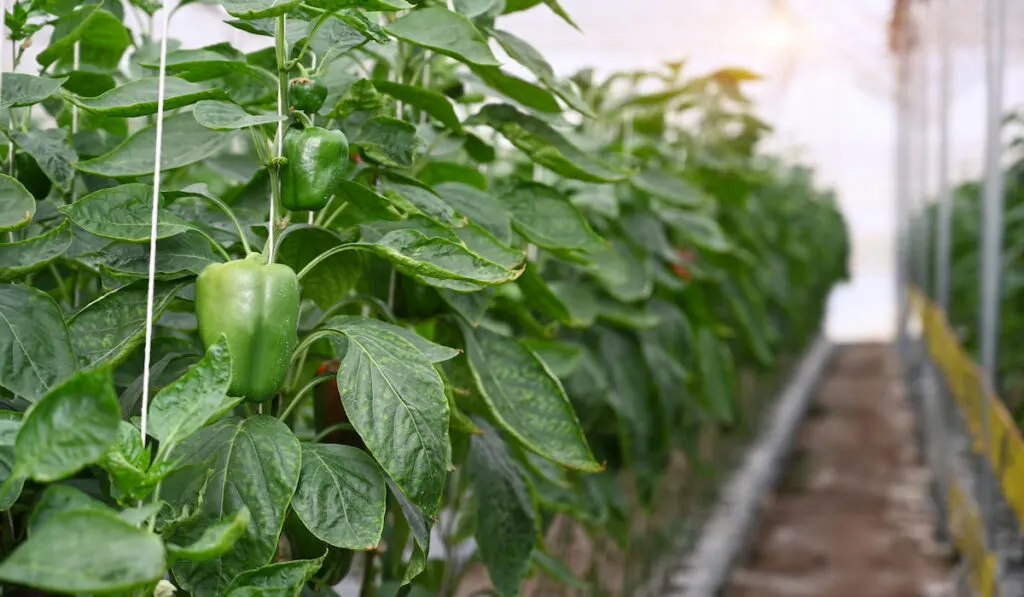
- Temperature: 70°F to 80°F
- pH: 6.5 to 7
- Growing time: 60 to 90 days
Bell peppers are extra hardy, so they will grow well in a hydroponic system if their conditions are met.
JLikestrawberries, you will most likely adjust the nutrient composition of your hydroponic system when your bell peppers start flowering.
Get the temperature right when growing peppers.
Remember that they are warmth-loving plants, so do not expose them to the cold.
4. Beans
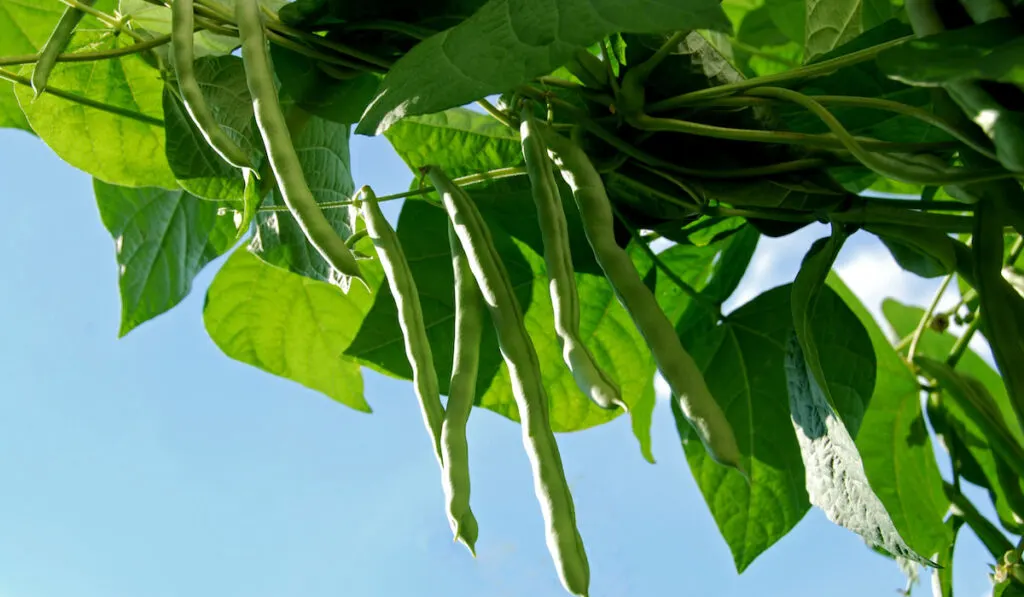
- Temperature: 65°F to 85°F
- pH: 6 to 7
- Growing time: Less than 80 days
Beans are some of the hardiest plants that you can grow. This is why they are always mentioned in any basic planting project ideas.
Your bean plants might grow larger leaves in a hydroponic system because they are exposed to more nitrogen.
Remember that people growing beans in the soil rely on nitrogen-fixing microbes to supply some nitrogen to their beans.
In the case of hydroponic beans, their roots have access to a lot of nutrients in the substrate, so you will most likely get more yield.
5. Mint
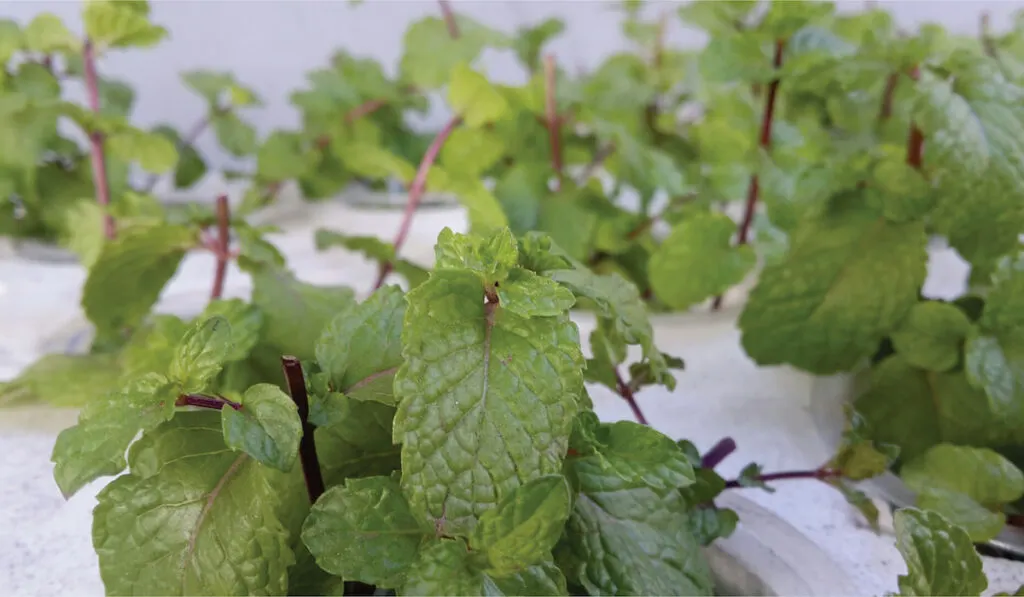
- Temperature: 65°F to 75°F
- pH: 6 to 7.5
- Growing time: 90 days
Do you love mint?
How’d you love to get an unlimited supply of fresh mint leaves in your home? It’s entirely possible when you grow mints in a hydroponic system.
Mint can grow productively in low-light conditions.
When you grow them with hydroponics, mint plants will give you no challenge as long as you give them the proper nutrients.
6. Cucumbers
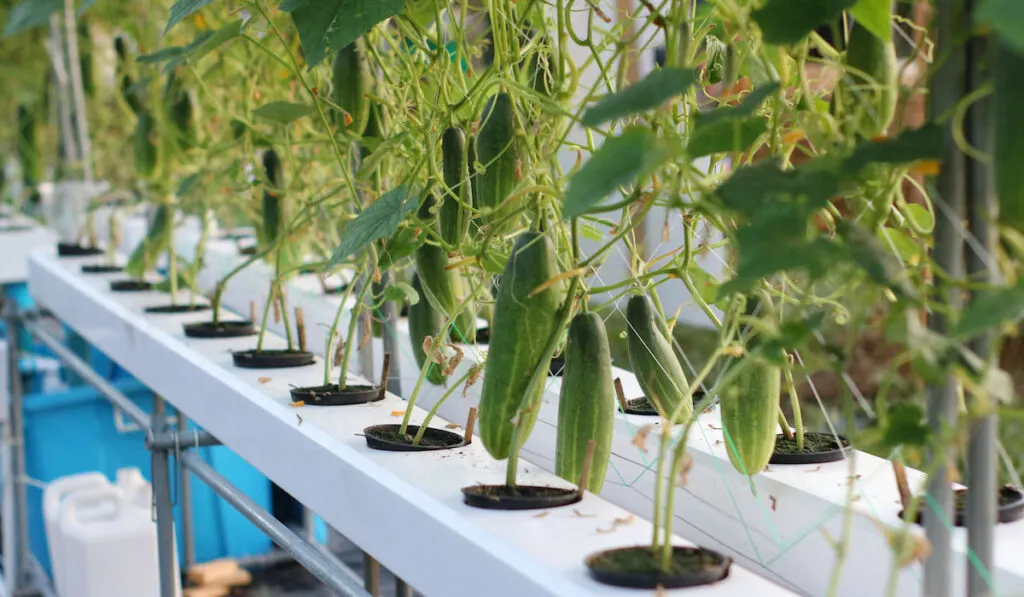
- Temperature: 75°F to 85°F
- pH: 6 to 6.5
- Growing time: 35 to 55 days
If you’re looking for the easiest fruiting plant to grow using hydroponics, you might be looking at it: cucumbers.
Cucumbers are resilient, and even when you change their nutrients (in the system), they do not get shocked quickly like other plants.
Cucumbers will reward you with their sweet fruits in less than 60 days.
Make sure that you give them a trellis so they can climb as high as possible.
Cucumbers can grow with other plants in the same system, so consider adding them to your current hydroponic system with plants already in it.
7. Tomatoes

- Temperature: 65°F to 85°F
- pH: 5 to 6.5
- Growing time: 60 to 100 days
Tomatoes are among the most popular plants that you can grow using hydroponics.
Many types of tomatoes can grow in hydroponic systems.
Most people grow determinate varieties, as they are easier to control.
Tomatoes will not just reward you with sweet fruits; they will assure you that you did a good job.
Just like you would for tomatoes growing in soil, protect your hydroponic tomatoes from pests. Also, grow them in warm rooms, as they are warmth-loving plants.
8. Spider Plants
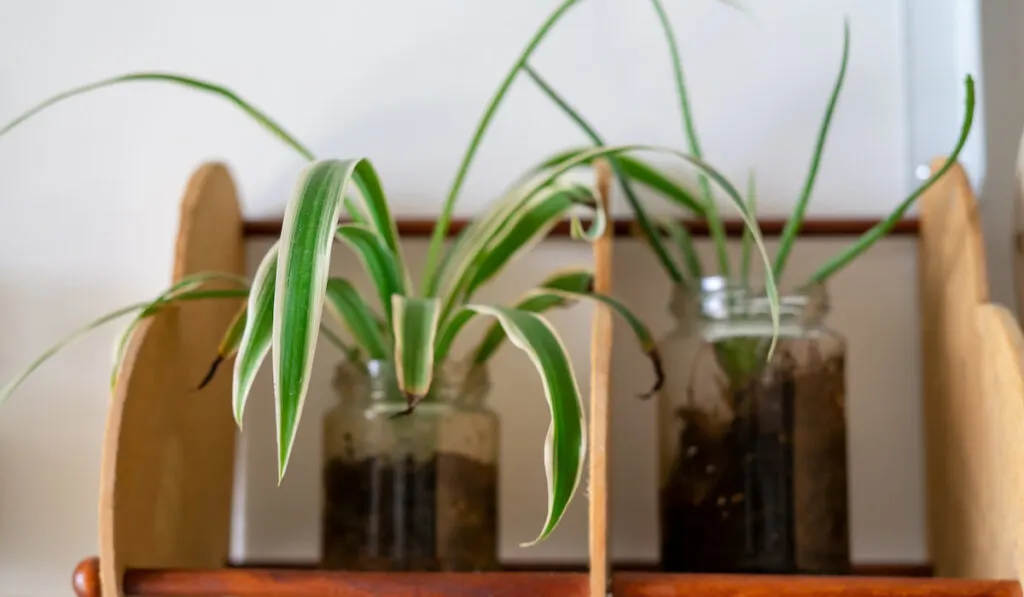
- Temperature: 70°F to 90°F
- pH: 6 to 6.5
- Growing time: Many years
Are you a fan of houseplants? Try growing spider plants. Looks impossible, right?
So many people think they cannot grow spider plants and other plants that do not like water because hydroponic systems are all about water.
Truth is, you can grow spider plants in a hydroponic system.
Reduce the exposure of your spider plants’ roots to the water. To do this, grow spider plants only in ebb-and-flow systems or others that help you to easily control the water flow.
Do not grow spider plants in systems where their roots will always be exposed or submerged in water.
9. Spinach
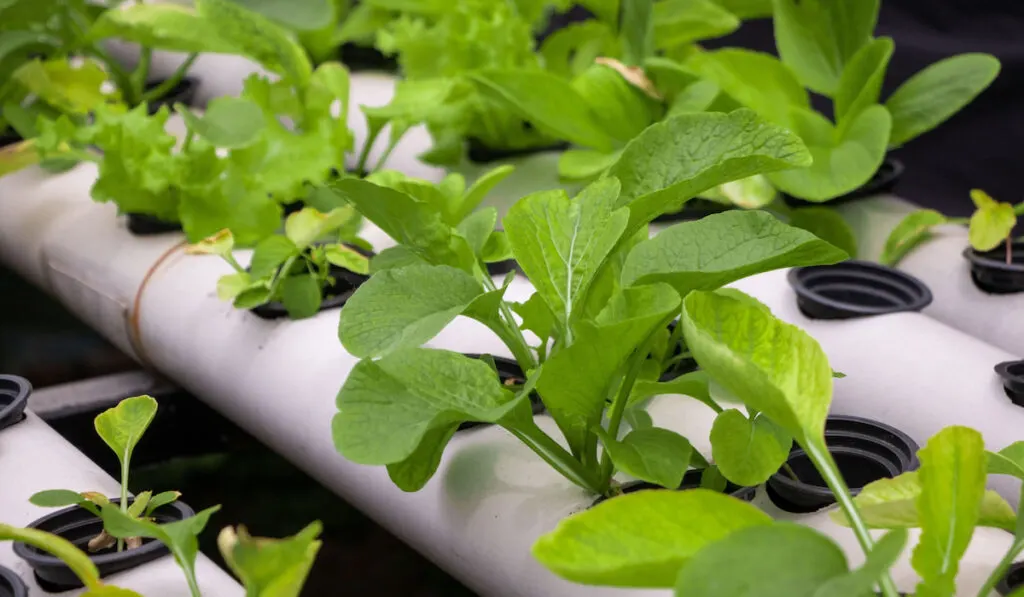
- Temperature: 50°F to 60°F
- pH: 6 to 7.5
- Growing time: 40 days
Spinach is a sweet, leafy green that can grow in any hydroponic system. This plant is not challenging; you can even add it to a system with plants already in it.
If you are growing your plants using organic nutrient sources, add some iron supplements to your nutrient tank so that the spinach can grow large, beautiful, and healthy leaves for harvesting.
10. Basil
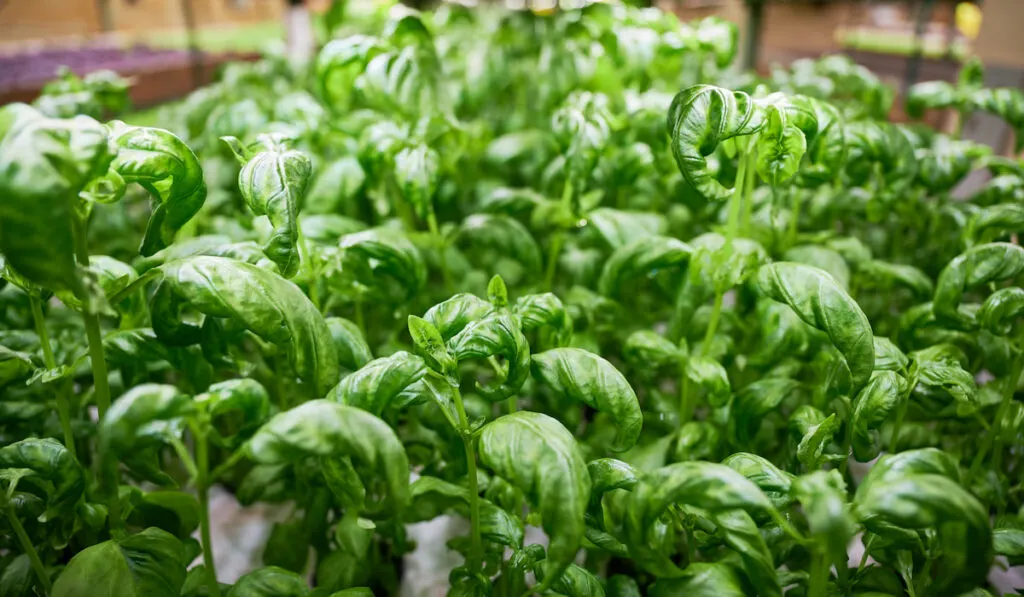
- Temperature: 50°F to 70°F
- pH: 6 to 7.5
- Growing time: 60 days
Do you love basil? If yes, grow it using hydroponics!
Hydroponic basil will supply you with constant herbs you can use in the kitchen.
Basil is easy to grow, and you can grow as many as you can when you use hydroponics. This means that even if you do not have an extensive system, you can grow many plants.
Hydroponic systems allow you to grow plants closer together than if they were growing in soil.
What Makes a Plant Suitable for Hydroponics?
Now you know some of the best plants to grow with hydroponics. What if your plant of choice is not listed above?
To know whether you can grow your preferred plant using hydroponics, consider the following factors:
1. Lighting Conditions

Even though you can provide the best lighting conditions for your hydroponic plants, remember that spending a lot of money on lighting may not be cost-effective.
Go for plants with low lighting needs.
Of course, you will provide artificial grow lights for your plants. However, try to expose the greenhouse (or growing area) to natural sunlight so that you do not have to spend as much to light your plants.
Always remember that no plant will grow productively in the absence of light, so you surely need light.
The point here is that instead of spending the extra money to buy, power, and maintain your grow lights, select plants that can grow well in the natural lighting conditions of the room.
2. What You Are Harvesting
Not every type of plant is ideal for a hydroponic system. Here are some plants that you can grow according to their use:
- Leafy greens: These plants will give you sweet and nutritious vegetables.
- Fruiting plants: They will provide you with juicy fruits.
- Flowering plants: You’ll love the sight of them in your room.
The ideal plants for hydroponics are plants we grow for their leaves, fruit, or flowers.
You’ll need a lot of effort, money, and experience to grow root crops, such as those producing tubers and bulbs.
Even if you want to grow a tuber-producing crop, it has to be one that gives you extra products. For example, radishes give you leafy greens in addition to their tubers.
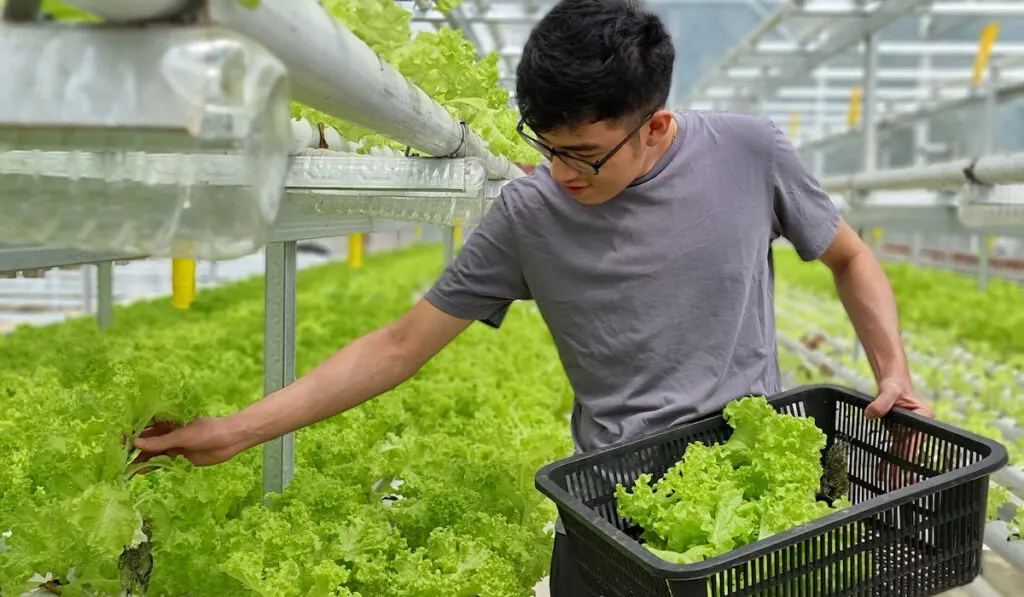
3. Weight of the Plant
Your hydroponic system is already heavy, as it has a lot of water flowing through its pipes and some growing media hanging in its containers.
You do not want to add to the weight of your system (significantly) by growing heavy plants.
Grow lightweight plants like tomatoes and lettuce.
Their weight will not damage your system or its pipes. These plants are also easy to remove from the system (after harvesting).
Woody plants such as large shrubs and trees are heavy, so even if you want to grow them using hydroponics, support them with a trellis, cage, or anything they can lean on.
4. Spacing Requirements

Something extra cool about hydroponics is that you can reduce the space between your plants.
Why?
You can reduce spacing between plants because every plant has equal access to the nutrient-rich substrate, so they do not need to compete for the nutrients.
The only (or major) thing to consider when spacing hydroponic plants is their lighting needs.
Some plants can block others from receiving sunlight.
However, some plants have their specific spacing needs. For example, tomatoes need more space than peas.
What then would happen if you have a small hydroponic system?
If your hydroponic system is not large enough to accommodate large plants or plants with a wide spacing need, go for smaller plants or plants that do not mind growing near other plants.
5. Water Requirements

Considering this factor will not just help you to select the best plant for your hydroponic system; it can also help you to construct (or adjust) your system to match your desired plant.
Hydroponic systems regularly send water to the roots of your plants.
In some types of systems such as the Deep Water Culture (DWC), the roots of your plants are always submerged in water.
What happens if you are growing spider plants, aloe vera plants, or others that do not like water?
Do not mix plants that have different water needs in your hydroponic system.
Grow similar types of plants in the same system so you can make a system that is suitable for a specific plant. If you choose to grow succulents, reduce how often the hydroponic system sends water to the plants and choose companion plants accordingly.
Conclusion
Hydroponic gardening is fantastic, right?
To get the best from your hydroponic garden, make sure that you grow plants that are suitable for hydroponics. Also, ensure that your hydroponic system is optimal for your plants with regard to their growing conditions.
